Issue #48 - Alex Andrews and Matt Waller
Happy Monday, everyone!
We made it to Issue #48! Thank you to everyone who read last week’s issue ❤️
Newly Released and Updated Indie Apps
Here are some newly released and newly updated apps from this past month! If you would like to possibly see your app in this list, please submit your app to the look at me form 👀
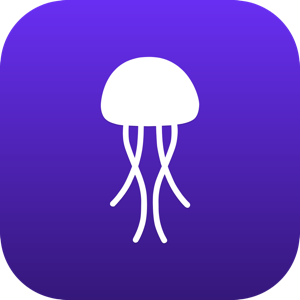
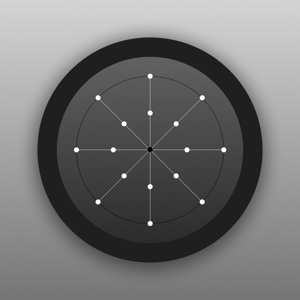
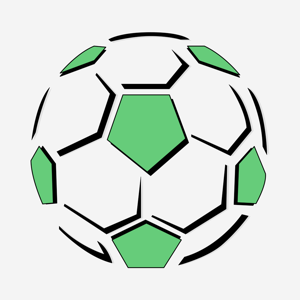
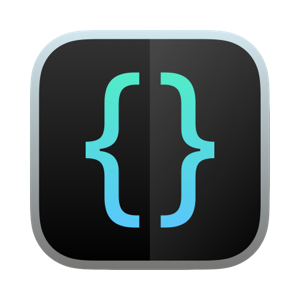
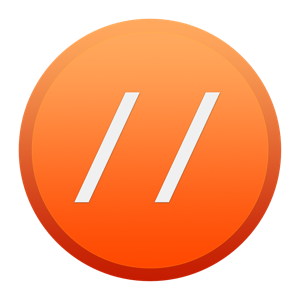
Today’s Spotlighted Indie Devs
📆 Today I’m featuring Alex Andrews and Matt Waller.
👉 Please make sure to follow them or support them anyway you can! 😇 I’m excited to share their indie dev stories.
Indie Devs
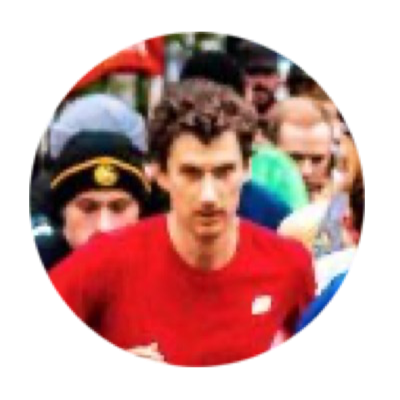
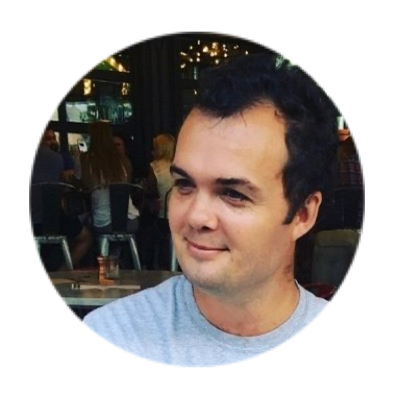
Alex Andrews
Q&A
1) What is your name? Where do you live?
Alex Andrews. I live in Toronto, Canada.
2) Introduce yourself. Education? Background? Main job? Interests outside of tech? Interests inside of tech?
Hi, my name’s Alex and I make apps for music education and training. 🎵 My company’s called Ten Kettles and I’ve been doing this full-time since 2014.
Before Ten Kettles, I worked in academic research as an engineer for about ten years, across a pretty wide variety of topics: hearing loss, cochlear implants, disability in children, human motor performance, and the science and psychology of music. There I built software, hardware, data analysis and processing tools, wrote papers, and all the rest. In many ways it was just wonderful–and it almost led to a PhD (and a research career)–but in the end I decided that wasn’t going to be my path.
When it comes to work-related interests, I love the meaningful impact of good education; the science and magic of digital signal processing; the discipline and results of TDD; the creative and caring side of design; and the deep satisfaction of good project management. Lots more, but those are a few things that come to mind!
Outside of work, what draws my time and thoughts these days would be family and friends, running (just hit a big personal best for 5K 🎉), reading, and sleep.
3) Have you ever considered yourself an indie developer?
Yeah, I’d say so. I spend the majority of my time working (independently) on my own apps, so it seems like a fair description. I do client work from time-to-time, but it’s not a major focus for Ten Kettles. If a very cool project comes up, then I can be tempted but to be honest I just love working on Ten Kettles’ apps.
That said, I’ve been a bit more thoughtful about the “developer” part of that label over the years. There’s a lot that goes into the apps: the concept, the design, the curriculum and videos (for Waay), working with users, and yes, the code. But I think the magic of a good app is a lot more than code, so I’m not sure the “indie developer” title fully captures the whole picture for me.
4) What got you started/interested in creating your own applications outside of your “normal” job?
I started a little company in my first year of university, developing my own calculus curriculum to teach high school students. I’d been tutoring and teaching for a few years at that point, and I just loved bringing it all together to run my own little company and teach classes. That planted a seed that stuck with me all the way through my degrees and the research years.
It was the idea of building another education company, but this time around music, that drove my foray into indie development. I’d had a pseudo-business plan kicking around on my computer for years. Originally it was going to be selling music lessons online (PDFs). But when the iPhone came out, it looked like a really compelling platform for what I wanted to do.
So, in 2011 I picked up my first Mac and started the online Stanford course for iOS. I kept chipping away on the side, off and on, and then by 2013 I had started building apps for the research lab I was working with. About six months or so later I started Ten Kettles.
5) How do you balance your time between friends/family, work, hobbies, and indie dev?
I like to keep my days pretty consistent. Up nice and early for a run, some meditation to get my head in a good space, and then family breakfast. I generally work within 8–5 (with a long lunch), and then it’s time for family, friends, hobbies, and whatnot after that. When I first started up Ten Kettles, I did much more learning about coding, DSP, and business outside of work hours (plus some actual work during the occasional crunch time). But, for now at least, other things have been drawing my interest once the clock hits 5 PM.
6) Waay, hearEQ, Beat Mirror - I absolutely love this collection of apps 🥰I have very little musical skills (right now) but I can 100% see these helping me on my journey to becoming a musician. I think I’m curious about how these apps started before I get into any specific questions? 🙃 Did you start off with music and then get an interest in programming or was it the other way around? Which of these apps was created first and how did the others come to be?
Thanks! I’m glad you like them. Before Ten Kettles, I sort of had two parallel lives: music and engineering. The music side had lots and lots of practicing, building bands, playing shows, recording–all that good stuff. And lots of teaching too, which has always been huge for me. The engineering side had coding, research, stats, DSP, and the occasional circuit board. After doing both for a while, it felt too… disjointed. I wanted a way to bring both sides together, and that ended up being Ten Kettles!
The first music app was hearEQ. That wasn’t really the plan. I had been working with a student from a local sound college who was doing the sound for my band at the time. One day I was taking her through some audio mixing lessons, and it hit me how useful this would all be as an app. I remember I was on a train a day or two later and suddenly I had drawn out all the mock-ups for hearEQ.
Waay was a much more “planned” endeavour. I tried to do all the stuff you’re supposed to: meet with scores of prospective users; draft design after design for feedback; do extensive Beta testing; and so on. Very different from the “let’s see if I can build it in a week!” approach to hearEQ 1.0. So much has gone into Waay, but I’d say the heart of it is the music theory curriculum. Many of the ideas came from years of in-person teaching, and I think that human approach really resonates with people.
For Beat Mirror, the idea came directly from band rehearsals. One thing that happened all the time is that we’d finish a run-through of a song, someone would say “how was the tempo on that?” and then we’d all look around and have completely different answers! The idea for Beat Mirror was to give us and other musicians the tempo feedback we’d need to really build our inner metronome. (Here’s a video.)
Finally, there’s WaayFinder, just released a few months ago. Enter in some notes from a melody, say F E F B♭ C, and then the app lists out all possible keys that could match–top match shown first (e.g., F major). A key is a set of notes that sound good together, and so a tool like this can be really handy for songwriting. I have a web app on the Ten Kettles site that does this and it’s really popular, so I wanted to see how a more fully-featured iOS app would resonate with people. (And here’s the video)
7) Waay - I am officially a user of Waay 😊 I’m really excited to learn about music theory. I’ve actually been wanting to for some time… and now I have a great method of doing it! Firstly, I am blown away by the ratings and review of Waay on the App Store 🤯 4.9 with 606 ratings is so good! What sets Waay apart from other music theory courses or apps? How can I apply my new found music theory knowledge? WIll it help me play instruments better? Write songs? Write music for video games? 😇
Thanks for downloading Waay! I’m so humbled by the reviews and emails I get about Waay. I’d say Ten Kettles is an education company first and a tech company second. So to have our flagship app really connect with people in this way just makes me feel so good.
I think the big difference with Waay is that the theory approach is, above all, practical and welcoming. I think songwriting is one of the most wonderful and self-realizing things a musician can do. If I can offer up theory in a unique way that is useful, empowering, and exciting, then that’s what I want to do.
Each of the lesson videos in Waay focuses on one specific topic. The following exercises then help you turn that bit of knowledge into a real, practical skill that you can take to your instrument and use. So, yes, it’s definitely all in the service of teaching you to write whatever music you want to write. 🎶
8) Waay - Besides having to know music theory, how to teach music theory, and programming… you’ve seem to also nail down the making of videos 🙌 I love this style of video lessons. It’s honestly enjoyable 😊 How long did it take to find a video lesson format that works? Do you have to go back and update videos lessons once published?
Thanks! I suppose I kind of stumbled upon the video style. I wanted something simple that wouldn’t detract from people’s concentration, but that would engage them and underline key points. This style seemed to work. I was a little worried it would be too simple at the beginning, but it seems to be a good fit.
Originally I did the videos in After Effects, but I switched to Motion for the newest courses. I think it’s made the video-making process a little more straightforward. It still takes time to get all the timing right, and to find that sweet spot between simplicity and interest, but I like the process. I do update the videos from time-to-time, but not often–they seem pretty complete as is.
9) hearEQ - Okay, this app is also amazing 😱 I’ve never understood how people could hear when pitch and frequencies were off. I honestly thought it was just a skill people were born with. Kind of like being born a witch or a wizard and I was just a muggle 😅 But I guess it turns out that I can train myself with frequencies with this hearEQ! I’m not very knowledgable at music so besides the fun that I’m having with hearEQ, how can this be applied to other things outside of the app?
hearEQ is all about building intuition for sound frequency. What does it really mean that a sound is “muddy” or “crisp” or “boomy”? It might seem pretty abstract, but it really is super useful–whether you’re a live musician, someone who mixes music, or a music lover who wants their stereo to sound awesome every time. I think the video explains it pretty well, but here’s a practical example:
When I was playing lots of shows, I found that it was common for my voice to sound muddy through the speakers at first. Some combination of the way I sung, my physiology, the microphone, the sound of the space, etc. But, I found that using the EQ to bring down the sound around 1 kHz and boost it around 4 kHz totally changed things. It brought clarity to the vocal sound–and let it pop through the mix without me having to crank the volume. Win-win.
So, hearEQ helps people develop that sort of intuition. What’s the nature of low frequencies? How do they contribute to a sound? How about mids? The app has a “Learn” mode where you play around with EQing your own tracks, and hearEQ offers up descriptions of each frequency band as you go. It’s fun. Then there’s a “Quiz” mode where you select frequencies to train with, pick an audio track, and get started!
10) Beat Mirror - Beat Mirror is gorgeous 😍 I don’t look at tempo apps often to so I don’t know know what they all look like but this is an insta-buy. It also looks easy to use and also useful on top of that! What was your inspiration for creating Beat Mirror? What was missing from other temp apps that lead you to create Beat Mirror?
Thanks! I work with an amazing designer friend from time-to-time, Joel Derksen. He designed the look for Beat Mirror (plus our beautiful website, the Ten Kettles logo, and the Waay icon too). I talked about the main inspiration earlier (sorry, jumped the gun on that one!), but I’d say what sets Beat Mirror apart is that the algorithm is just really responsive and accurate–plus the user experience and Joel’s design is just fantastic.
I think working on an algorithm-focused app was a big draw for me with Beat Mirror. I love digital signal processing, and algorithm development had been a big part of my time in research. I think the excitement of getting right back into it–the audio, the signal processing, the optimization–drove the development. (Plus, despite going to school for this stuff, I had recently come across the best book on DSP I’d ever read. I was amped to put this new understanding into practice!)
11) Waay, hearEQ, Beat Mirror - Again, I’m amazed by this collection of app! I can say that I’m a huge Alex and Ten Kettles fan 😊 What’s next?! Working on new courses for Waay? Or updates to hearEQ or Beat Mirror? I can’t wait to see what you come up with next!
Thanks! The new course for Waay was something I’d had in the pipeline for a while, so it was super rewarding to get that out there recently. I also just put out an update for hearEQ with a whole new way to load songs.
But I think there are three things that I need to do next. Something big for Beat Mirror, something big for hearEQ, and a better way to price my apps (pricing has never been a strong point of mine!). Next week is a vacation week for me, so I’m hoping the time away will help with the decision of which route to take next!
12) What’s been the hardest part of being an indie dev? What the most fun part of being an indie dev?
There’s so much that I love about doing this for a living, but I’d say what gives me the most trouble is marketing. I like the idea of writing educational articles as a form of marketing (here’s the newest one on a note’s journey through the air!), and of talking to people about what I do (thanks for this interview!). But I think when it comes to other ways to really spread the word about my apps, I have a lot to learn.
The most rewarding part is getting feedback from people who the apps have really affected. People write to me saying they thought they’d never understand music theory but now with Waay they do. They’re excited, they love learning it, and they want to write music now. That’s the best part of the whole thing, hands down.
13) Is there anything else you’d like to tell the indie dev community about you?
Hmm, I think one thing, for me at least, is that it’s really not all about the dev part. Don’t get me wrong, I love writing great code, exploring new approaches to do that, and occasionally venturing into a new framework or way to use a language. But more and more, that seems just like a means to an end. I used to be more active on Twitter about programming, watch WWDC with rapt interest, read programming books cover to cover, and so on. But there’s just so much other stuff about building good products that draws my attention these days. Sometimes it seems like that’s an odd thing for a “tech person” to feel, but I think that’s OK!
14) Do you have any other indie devs that readers should follow / lookout for?
Chris Liscio has always been someone I’ve looked up to. I had the fortune to work with him on my last venture into client work (with RØDE Microphones), and it was such a fantastic experience. Check out his app Capo!
Quentin Zervaas is behind the well-known Streaks app–one of the very few apps I use daily. I really like what he’s doing and his approach to developing apps.
Also, I remember an interview with the creator of the CARROT weather app, Brian Mueller, on a podcast years and years ago. It really resonated with me. He talked about coming to app development from script-writing, and I loved that. His app is also great.
And obviously everyone should be following @IndieDevMonday and Josh Holtz!
Matt Waller
Q&A
1) What is your name? Where do you live?
My name is Matt Waller (he/him). I live in Austin, Texas.
2) Introduce yourself. Education? Background? Main job? Interests outside of tech? Interests inside of tech?
I grew up in Bolivia with Christian missionary parents who taught impoverished farmers how to drill their own water wells. I was in Bolivai from 6 years old to 18 years old and came back the U.S. for college and graduated with a degree in journalism. I was a journalist for 7 years, eventually covering the Texas Capitol for four small city newspapers at the same time as the Austin bureau chief.
I got into apps making projects on the side, nights and weekends, that scratched my own itch. Like for apps to help with journalism transcription. Eventually I got good enough to work on it full time. Now I’ve worked about seven years in software full-time!
Beyond tech, I’m busy taking care our toddler with my wife, creative writing off an on (third draft of a novel), and guitar jam sessions. I volunteer in humanitarian work through my church, and I’ve started mentoring newer developers. Like so many of us though, coding side-projects are my main hobby.
3) Have you ever considered yourself an indie developer?
Absolutely. If I could make enough to live off of my own apps, I would. I got very close once, and I’ll try again, slowly and steadily.
4) What got you started/interested in creating your own applications outside of your “normal” job?
As a journalist, one day I thought, man, I wish I could add a little feature to my voice recorder app. Just slow down audio without changing the pitch so that I can transcribe more easily.
So I googled around and saw that it was possible to do. So I set out to make an app and absolutely fell in love with coding from the moment I got a button working on my iPhone. Just seeing a button that printed “hello world” on my own device was magical. A high school semester of coding in Visual Basic in never really got me interested in programming, but this was stunning.
I made more apps, nights and weekends, until I felt good about developing full time. Now I’ve worked as a freelancer, as full-timer on Fox’s streaming apps (before the Disney deal), as a contractor with Apple, and currently as a full-timer for Hotwire, the hotel deals app. And I still love launching side-projects.
5) How do you balance your time between friends/ family, work, hobbies, and indie dev?
I try to be realistic about what I can achieve. I can squeeze in maybe a few hours a week of dev work for my side project. So the apps I make are very simple. I recently sold off my LLC (because the app I was selling used CloudKit once, so there went the whole company; classic), which had just a ton of apps. Now I’m focusing in and ust doing a little at a time.
6) Pearl - Congrats on your recent release of Pearl! This is a neat concept and I already heave a beautiful Pearl widget setup on my iPad running iOS 15 (yay widgets). Is Pearl the first app you released? What was your motivation and inspirations behind creating and releasing Pearl?
Thanks so much! Pearl isn’t the first app released, but it is the first app released under my new company and with a new mindset. I go more into depth on why I created Pearl at my launch blog post but the gist of it was feeling the stress and anxiety and exhaustion of the pandemic last year. I wanted help remembering good things. That was all.
It’s no replacement for therapy, medication or long talks with friends or anything, but it’s just nice. And I wanted to make an app that was as polished as possible, best-in-class as the kids say. I wasn’t even sure I would release the app. I wanted to see if it was actually enjoyable first. And, for me, it certainly has been.
7) Pearl - This app is so pretty 😍 I love the green pearly look in the app and widgets. I feel like it actually inspires me to write better wellness reminders 😊 The screenshots in the App Store are also really well done! I have to admit I looked at them very closely and for a while because I loved them so much 😛 How important was the design and look and feel of Pearl? Did you have an idea of the design before developing?
Thanks! Making Pearl look really nice was central to the experience. Like you said, I wanted to inspire an environment of wellness and encouragement, a little app oasis. And yeah, this was also a fun time to up my screenshot game. I use Rotato, an app for generating 3D mockups and videos. I didn’t have a solid idea of how I wanted the app to look. More how I wanted the app to feel, and what the app would do.
8) Pearl - This name is so perfect! I feel like it really fits the app. Is that name related to the common phrase “Pearls of wisdom” by any chance? 😇 Because that exactly what I think of and the reason why this was an insta-buy for me 🙃 Did you have any other names you were considering or did you know Pearl was it?
Thanks! Pearl was a name I reached fairly quickly. It absolutely plays with the idea of “pearls of wisdom,” and also with the feel of the app itself. I wanted the app to be small, simple, but incredibly polished and precious. I think I thought of naming it Jewel once, but no, Pearl was just so much better.
9) Pearl - What was one of the hardest things you came across when making Pearl? Was there anything fun you learned along the way?
The hard part of Pearl was really trying to think of a great design scheme. I went through a ton of designs. I had the cards flipping over in place. I had crazy matched geometry transitions here and there. I did a lot of stuff. In the end, the simpler felt a lot better.
Even after I settled on the general design structure and went through a few design drafts, I got professional help from designer friends to make it really shine. Learning how to outsource areas where I’m not as strong right now is definitely a learning experience, but well worth it. Slowly I get better at design on my own (I hope), but I’m a big fan of bringing in fresh eyes and fresh takes to make an app standout.
And then of course I took it upon myself to extend those designs and adapt them to iPad and Mac, since I made it a universal purchase. And because I wanted specific things that weren’t available through Catalyst, I actually made it a full, SwiftUI Mac app.
10) Pearl - What’s next?! Do you have any planned features for Pearl that you can share with us? 😁
Surprisingly, there is so much I could do with Pearl! I keep thinking of little features that I could add to make the app more charming and fun. Integrating the user’s images in various, tasteful ways comes to mind. And of course I want to prepare for the iOS notification changes coming in iOS 15.
I might still play with the business model too. Make it free/freemium? Add a tip jar? Add a subscription tip jar/patronage thing? Add a subscription for just a handful of nice, premium features, while keeping an always-free tier? Grandfathering in existing users, of course. Lots to consider.
11) What’s been the hardest part of being an indie dev? What the most fun part of being an indie dev?
The hardest part is really just finding time at this stage. After that there are all the things that don’t come naturally to an introverted programmer: like the solo promotion/marketing work. Those are the veggies though; they keep you growing.
12) Is there anything else you’d like to tell the indie dev community about you?
Oh, I’m sure I’ve said too much already! But thanks 🙏
13) Do you have any other indie devs that readers should follow / lookout for?
There are great up and coming folks on this thread. I love helping people get into the business! Plugging @joinpursuit and @UnderdogDevs for the great work they’re doing!
Thank you to everybody who made it to this footer! You either spent the time to read or took the effort to scroll 😊
Make sure to visit https://indiedevmonday.com/subscribe to get an email of future issues!
And go to Twitter and give @IndieDevMonday a follow… or multiple follows if you manage more than one Twitter account 😜